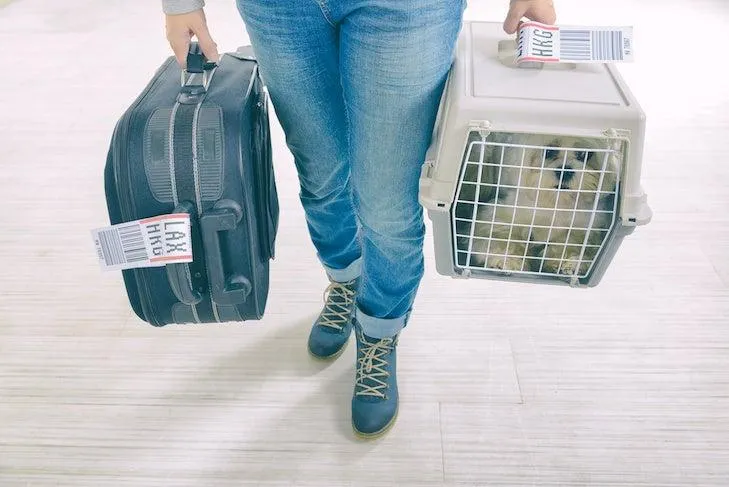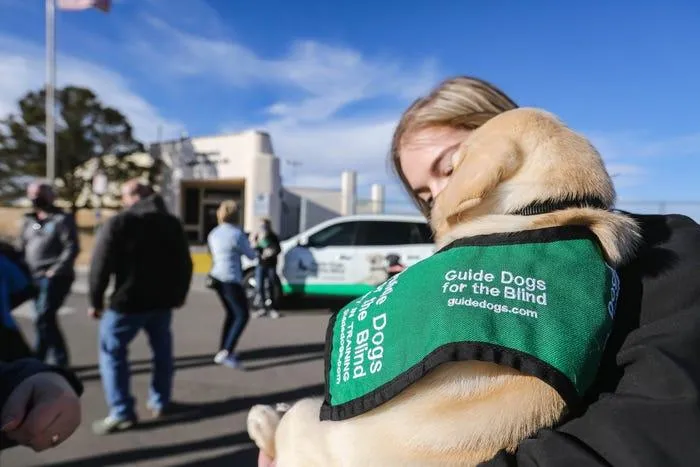A Guide to Flying with Your Emotional Support Dog
Flying with your emotional support dog can seem intimidating, but with proper planning it doesn’t have to be stressful. In this article I’ll cover everything you need to know to navigate the process smoothly. Whether it’s your first time or you’re a seasoned pro, I hope you find the answers to your questions here.
Qualifying for an Emotional Support Animal
The first step is to make sure your dog qualifies as an emotional support animal (ESA). To do so, your mental health professional must assess whether you have a disability as defined by the Air Carrier Access Act and prescribe the ESA as treatment. They’ll provide documentation, often called an “ESA letter,” verifying this prescription.
From my experience working with clients, the most important thing is that your mental health provider thinks the ESA is necessary – not just that you think your pet is cute or you don’t want to pay pet fees. Airlines take potential abuse seriously. So be sure to get the proper letter stating why your dog is needed for your specific disability.
Booking Your Flight
When booking on the phone or online, inform the airline that you’ll be traveling with an ESA. Many will code your reservation so the animal flies free of charge in the aircraft cabin. Don’t try to sneak your pet on as a surprise! That’s considered fraud.
I’ve seen situations where travelers forgot to disclose their ESA, then faced unwanted attention or fees at the airport. To avoid hassles, be upfront from the start. Most airlines are accommodating once they see your proper documentation.
Documentation You’ll Need
- ESA letter: From your licensed mental health professional, specifying your condition and that the ESA provides emotional support.
- Vaccination records: Prove your dog is current on all required shots. Rabies vaccination must be given at least 30 days before travel.
- ID tags: Make sure your dog wears ID tags at all times during travel.
Stash these papers together in an easy-to-access folder or wallet. You may need to present them at check-in, security, or the gate if asked. Being organized can help things go smoothly.

Preparing Your Dog for Flying
Just like people, dogs can get stressed flying. To help yours feel more comfortable:
- Practice taking your dog new places leading up to the trip. Get them used to being in crowds, around unfamiliar noises and sights.
- Bring favorite toys or bedding that smells like home. Familiar scents can be soothing.
- Give calming treats if needed during the journey. Ask your vet if any are suitable for your dog.
- Consider sedative medication from your vet for anxious fliers. But get guidance on proper dosage.
Most experts agree it’s best not to take dogs that become car sick on planes, as airsickness is more likely at altitudes. But I’ve found that anxiety usually trumps motion sickness fears. So go slowly and stay flexible based on your pup’s needs.
At the Airport
When it’s time to fly, be sure to follow these pointers I’ve picked up over the years:
- Arrive early to check in. My advice is get there extra time in case lines are long.
- Keep your ESA secured on a leash or in an airline-approved carrier at all times. Don’t risk letting them run free.
- If traveling internationally, research import policies for the destination country well ahead.
- Don’t expect other passengers to pet or play with your ESA. Their job is to support your needs, not socialize.
- Bring supplies like extra food, water, poop bags, and your exercise plan in a zipped carry-on.
Some airports even have relaxing “pet relief areas” now. Take advantage of these to break up your pup’s time waiting in terminals.
Aboard the Plane
Finally, the big day arrives! Here are some last-minute tips for in-flight success:
- Seat your ESA at your feet or on your lap depending on size. Never put them in the aisle where they could block passage.
- Provide fresh water before takeoff and landing when drinking is restricted.
- Give calming treats and praise to reinforce good behavior like settling down quietly.
- Step out of your row if possible to let your dog potty on long flights. Beware bladders can’t hold it as long at pressure changes.
- Be aware turbulence or engine noise may startle your pup. Reassure them with gentle touch or commands.
Traveling can be exhausting, but with some strategy flying with your ESA is totally doable. Don’t be afraid to ask for leashes so they don’t wander, or visit the lavatory and take them out if needed. Most flight crews are very accommodating to calm ESAs.

Post-Flight Tips
Once you land, stay relaxed. Enjoy stretching your legs and let tired pups rest before continuing your journey. Remember to keep your ESA under control at baggage claim too.
Reward both you and your pooch with compliments for getting through the process. Then focus on enjoying your destination with an emotionally supported sidekick by your side the whole way.
I hope sharing these insights eases any worries about air travel with your emotional support dog. Feel free to reach out if you have any other questions! Safe exploring.
Essential Information on Traveling with an Emotional Support Animal by Air
| Airline | Notification Needed | Documentation Required | Fees |
|---|---|---|---|
| Delta | 48 hours | Letter from doctor/therapist | No |
| United | At least 48 hours | ESA letter and vaccination records | $125 each way |
| American | At least 2 weeks | ESA letter and vaccination records | No |
| Southwest | At check-in | ESA letter only | No |
| Alaska | At least 48 hours | ESA letter and vaccination records | $125 each way |
| JetBlue | At least 48 hours | ESA letter only | No |
FAQ
-
Can I bring my emotional support dog on a plane with me?
Basically, yes – you are allowed to bring your emotional support dog with you in the cabin on flights in the U.S. However, certain requirements must be met. You’ll need a letter from your licensed mental health professional stating your need for the animal. The dog also has to be well behaved and able to fit on the floor at your feet without bothering other passengers.
-
What documentation do I need for my emotional support dog?
To bring your emotional support dog with you in the cabin, you need a letter from your doctor or mental health professional. This letter should be on official letterhead and explain that you have a mental health condition and how the dog provides emotional support. The airline may also require veterinary records showing the dog is properly vaccinated. Basically, be prepared to show the docs if asked.

-
Are there size or breed restrictions for emotional support dogs?
Most airlines won’t let dogs over 20 pounds fly with you for free in the cabin as an emotional support dog. Some carriers also ban “bully” breeds like pit bulls for safety reasons. At the same time, restrictions vary by airline so check policies ahead of booking your flight. Perhaps consider a smaller companion if size is an issue.
-
What behaviors are expected from an emotional support dog on a plane?
Your dog needs to behave well in the airport and on the plane. It should remain under your control at all times without jumping on people, barking excessively, or having accidents. Your dog also needs to fit safely in your foot space without blocking the aisle or bothering others. Basically, keep your pooch well-trained and don’t let it disturb the peace on the plane.
-
Can an emotional support dog sit in my lap instead of the floor?
Generally no, your dog must stay at your feet due to safety regulations. However, on rare occasions small dogs have sat on laps. But is it worth risking a complaint from other passengers? Plus, what if turbulence hits? It may be kinder to the pup to keep them secured safely on the floor. Check airline policies for the official stance.
-
What if my dog acts up on the plane?
If your pooch starts misbehaving like barking or not obeying commands, the flight staff have the right to relocate you to a different seat away from others. In extreme situations of growling, biting or lots of disturbances, they can refuse your boarding or have you get off the flight. So work hard at training your doggo on airplane etiquette to avoid awkward scenes at 30,000 feet!
-
Is air travel very stressful for emotional support dogs?
The busy airport, noise, new smells and close quarters on the plane can definitely be overwhelming for sensitive pups. Make sure to comfort and reassure your dog throughout the process. Consider anxiety medication prescribed by your vet if flying causes too much distress. And be aware that the ordeal may tire pooch out for days after landing! Nevertheless, with slow, positive training many dogs can learn to tolerate flights okay.
-
Do I need a new letter for each flight?
in most cases, one official letter of need from your doctor or mental health provider will be sufficient documentation for multiple flights over a year or less. However, policies differ by airline so check with yours. Some require a more recent letter for international flights. And always remember to pack current veterinary records and ID tags on your pup just in case proof is requested at check in.

